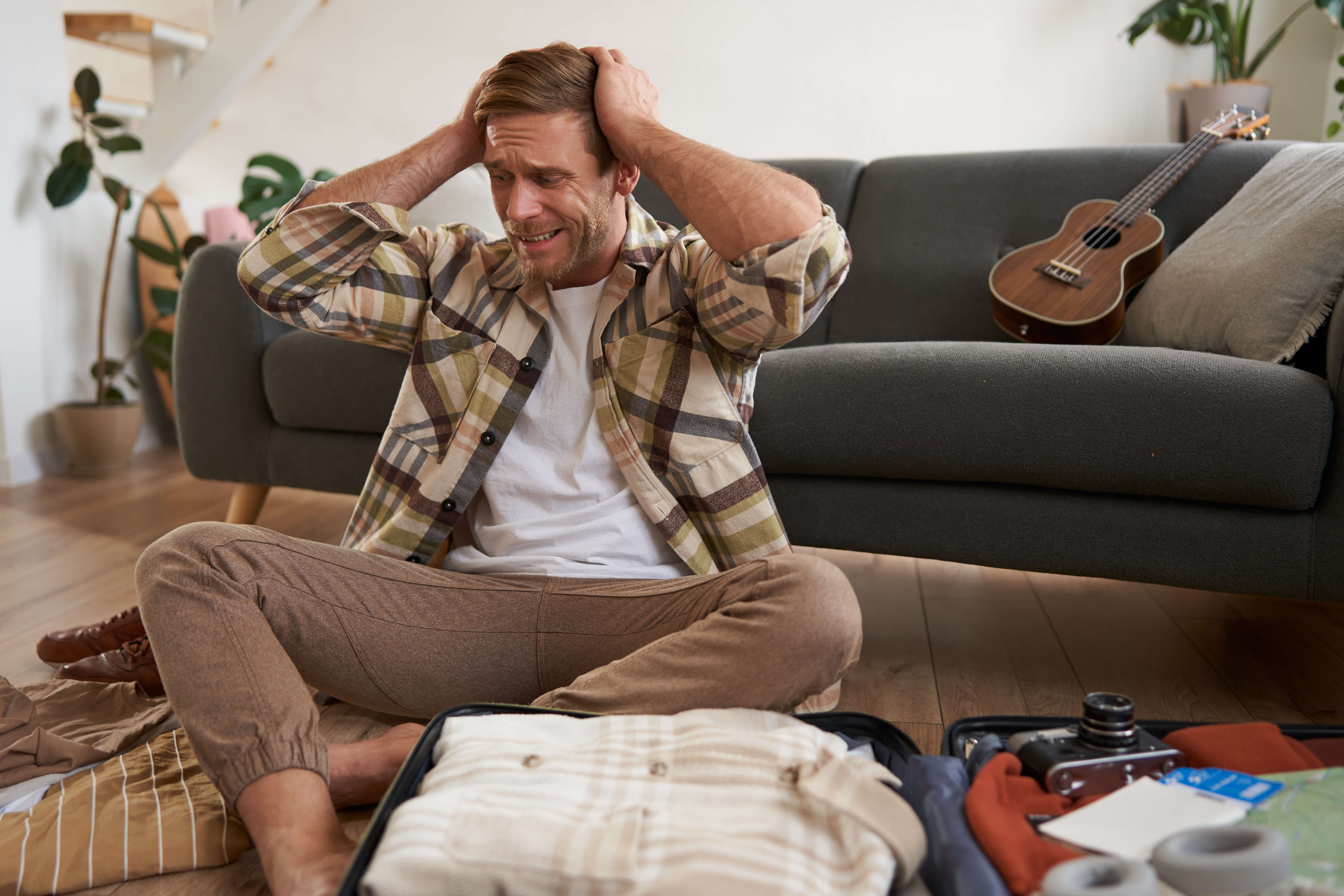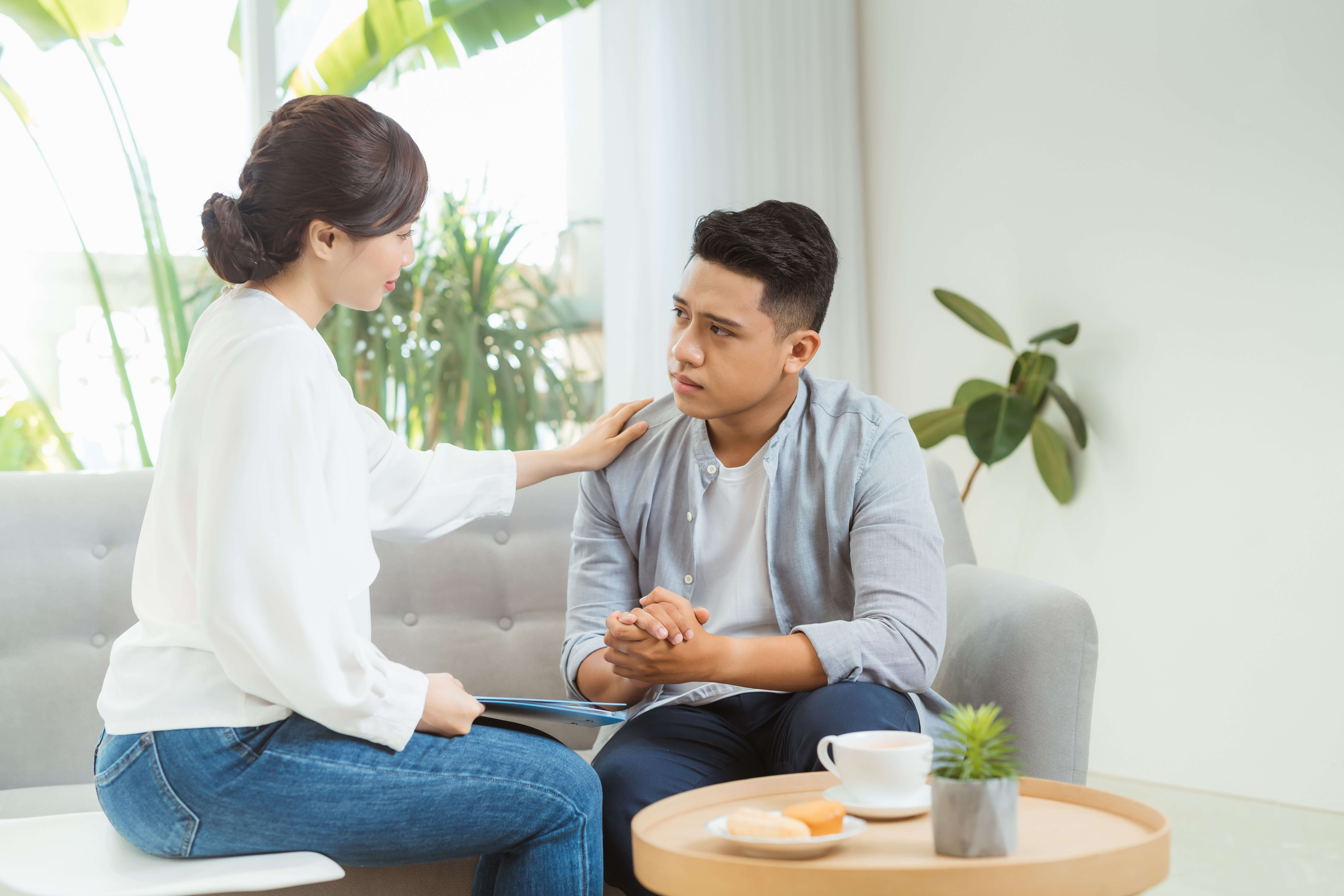Agoraphobia: Symptoms, Causes & Treatment
What Is Agoraphobia?
Agoraphobia is a type of anxiety disorder. Agora means ‘open space’ or ‘place of assembly’, and phobia means ‘fear’.
So, agoraphobia is a fear of places or situations that may trigger a person’s panic, feelings of helplessness, and embarrassment. The person may also fear a real or imagined situation.
For example, a person with agoraphobia may fear and avoid using public transport, being in open spaces like the beach, standing in a line, or being in a crowd.
This situational phobia occurs due to the fear that there is no way to escape the situation or to get help if one’s emotions get out of control.
Due to this fear, people may avoid basic and necessary situations like using the bathroom at night, drinking water, or going out alone. Some irrational fears may include fear of getting lost, choking on water, or being stuck forever in a room.
In general, people with agoraphobia may develop fear due to one or more panic attacks. In hopes of avoiding another panic attack, they may avoid places to prevent another episode from occurring.
This avoidance behaviour may directly lead to phobias in certain situations.
People with agoraphobia may struggle due to several factors, such as:
- Feeling unsafe in public places (eg exam halls, concerts, universities, workplaces)
- Feel a need to be accompanied by a companion constantly (eg friends, family members or romantic partner)
- Avoiding healthcare due to crowding in hospitals and clinics
- Turning down party or wedding invitations
- Refusing to attend a close member’s graduation ceremony due to fear of crowd
Agoraphobia may make it incredibly hard to function normally in daily life.
The person may struggle to form and maintain relationships, perform well in work, and find it hard to freely engage in casual behaviours (eg shopping) for self-care or survival.
TYHO Services
Related Pages
- How Trauma Affects Physical Health
- What is Wrong With Me?
- Post-Trauma Stress
- The 12 Stages of Burnout
- 7 Tips for Managing Work Stress
- Practising Self-Compassion
- Why Do I Feel Sad for No Reason?
- “I Want to Die”: Warning Signs, Causes, Myths and Seeking Support for Suicidal Ideation
- Maladaptive Behaviour – Causes, Examples, and Ways to Cope
- How to Be Happy Again? Rediscovering Joy and Happiness
- FOMO: The Fear of Missing Out And the Psychology Behind It
Symptoms of Agoraphobia
Common symptoms of agoraphobia include fear of:
- Leaving home
- Performing basic tasks like grocery shopping independently
- Crowds or large spaces such as theatres
- Enclosed areas like small stores or elevators
- Using public transportation
The above situations may cause intense anxiety because the person may feel like they will be trapped in the area without any rescue or help from anyone.
The anxiety can also lead to intrusive thoughts such as fear of dying, choking to death, or harming oneself accidentally.
Physical symptoms of agoraphobia may include dizziness, fainting, sweating, pounding heart, or diarrhoea.
The symptoms may be significantly disproportionate to the actual danger of the situation. For example, a person might panic and think they may get hit by a bus while walking to the grocery store.
However, this can be prevented by walking in the footwall and following the traffic rules.
Your fear or avoidance behaviour may usually last six months or longer and affect all aspects of your life, including work, personal, family, and interpersonal relationships.

Types of Agoraphobia
There are many types of phobia-related disorders.
However, the two main types of agoraphobia include:
- Agoraphobia with panic disorder
- Agoraphobia without panic disorder
Most of the people may have agoraphobia without any history of panic attacks.
In such cases, the person may fear being stuck inside a room or a situation where escape would be impossible or humiliating. However, since they don’t have a history of panic attacks, they may not have a full-blown episode.
Rather, these people may worry about other types of distressing symptoms, such as vomiting, nausea, fainting, or having severe migraine.
For example, a common symptom among those who have agoraphobia without panic attacks is fear of losing their bladder control in public without any help available to deal with the situation (lack of restrooms or travel accommodations).
It is important to note that one-third to half of the people diagnosed with panic disorder may also develop agoraphobia.
Panic Disorder and Agoraphobia
Panic disorder is a type of disorder where a person may have severe and frequent episodes of panic attacks.
Panic attacks include an intense fear response categorised by extreme fear, pounding heart, racing thoughts, and thoughts of dying.
Fear of having an anxiety attack may cause a person to develop symptoms of agoraphobia (eg avoiding situations or people that could trigger an episode).
Symptoms of a panic attack include:
- Rapid heart rate
- Trouble breathing
- Shortness of breath
- Muscle aches
- Headaches
- Chest pain
- Sudden chills or flushing
- Feeling shaky and faint
- Fear of dying
- Feeling a loss of control over oneself

Causes – Agoraphobia
As with other mental health conditions, the exact cause of agoraphobia isn’t fully understood.
However, a combination of biological and psychological factors could contribute to the condition’s onset.
Biological Causes
Panic disorder is usually very common in those struggling with agoraphobia. This is to say that panic is our body’s natural ‘fight or flight’ response – its own way of protecting you from harm or danger.
Fear of certain situations may cause your body to release hormones like adrenaline. This hormone could influence your breathing and heart rate, which are increased during perceived danger.
In people who have agoraphobia along with panic disorder, the fight or flight response becomes more intense, thereby resulting in a panic attack.
Psychological Causes
Psychological causes of agoraphobia could include:
- A traumatic childhood experience (ie PTSD) such as the death of a parent, sexual abuse, or bullying
- Experiencing a distressing event like harassment, discrimination, hate crime, divorce, unemployment, or racism
- A personal history of mental health disorders such as depression, generalised anxiety disorder, bulimia, or addictions
- Being in an unhealthy or manipulative relationship
How Is Agoraphobia Diagnosed?
A Singaporean psychologist diagnoses agoraphobia based on your symptoms and unique experience.
Your psychologist may ask you about your symptoms, personal history, mental health history, family history, and relationship dynamics to gain a big picture of your problems.
You may also have to ask how frequently you have these symptoms and when they started.
Sometimes, the psychologist may refer you to a medical doctor to perform blood tests. This is done to rule out any physical health issues that may overlap with symptoms of agoraphobia.
To be formally diagnosed with agoraphobia, your symptoms must meet the diagnostic criteria given in the APA’s Diagnostic and Statistical Manual of Mental Disorders (DSM).
The DSM is an official manual that mental health professionals may use to diagnose mental health disorders.
The diagnostic criterion for agoraphobia includes an intense fear or anxiety in two or more of the below events. These include fear of:
- Public transportation, such as a train or flight
- Open spaces like beach
- Enclosed spaces like a car
- Crowded areas
- Being alone at home or going out alone
Additional criteria for a diagnosis of agoraphobia include having recurrent panic attacks, followed by a fear of:
- Having more panic attacks
- Facing the consequences of a panic attack, like vomiting or fainting
- Change in one’s behaviour due to panic attacks (eg avoiding hanging out with friends or dating)
Moreover, your Therapist in Singapore may also assess your symptoms to make sure that they don’t indicate any other mental health issues like addiction or eating disorders.

Management and Treatment
If you develop agoraphobia with panic disorder, your symptoms may usually begin within the first year of your first panic attack. If left untreated, the phobia may become worse or severe.
According to research, a combination of psychotherapy, medication, and self-care is the most effective treatment to manage and reduce the symptoms of agoraphobia.
Therapy
Psychotherapy, CBT, and exposure therapy are some of the different types of therapy services provided at Talk Your Heart Out (TYHO). At TYHO, we provide both offline and online therapy.
Psychotherapy
Psychotherapy, or talk therapy, is a therapeutic intervention in which you may regularly engage in structured and safe conversations with your Singaporean Therapist.
During therapy, you may have a non-judgemental and confidential environment to talk about your fears and issues that may be triggering your condition.
For example, you can share if spending time with a specific friend or with your romantic partner causes you to have panic attacks.
People who are stuck with manipulative and gaslighting partners may struggle to open up with their friends and family.
However, your Therapist provides you with unconditional support and positive regard to help you in the best and most effective way possible.
Psychotherapy is usually a short-term intervention that can be stopped once you’ve learned to manage your symptoms on your own.
CBT
Cognitive behavioural therapy is the most common intervention used to treat agoraphobia.
CBT can help you identify, acknowledge, and address your distorted or negative thoughts and feelings associated with agoraphobia.
CBT counsellors may help you develop essential therapeutic skills that can help you control your thoughts and emotions during an episode of fear.
Through consistent afforable counselling, you may eventually gain a strong sense of control in your life and become self-reliant to solve your problems in the future.
Exposure Therapy
Therapists who use exposure therapy may help you take control of your fear by gradually and safely exposing you to triggering situations.
They may do so in a way that your symptoms do not further trigger you. Hence, do not try this on your own or with anyone else. Only a certified professional can perform and practise exposure therapy.
Through gradual exposure, your fear of certain situations may diminish.
Medications
Your Therapist may refer you to a psychiatrist if you prefer to take medications along with psychotherapy.
Medications are not compulsory and can depend on your preference, the Therapist’s recommendations, and the severity of your symptoms.
Hence, feel free to have an open discussion with your Therapist and psychiatrist to understand the pros and cons of taking medications for agoraphobia.
Common medications prescribed to treat agoraphobia may include:
- Selective serotonin reuptake inhibitors (SSRIs)
- Serotonin-norepinephrine reuptake inhibitors (SNRIs)
These medications can also be used to manage symptoms of depression or anxiety disorders.
However, do note that only a medical doctor can prescribe medications for you. Starting meds or changing the dosage by yourself could lead to potential harm like withdrawal symptoms or, in severe cases, even death.
Self-Care

Following certain self-care tools or making lifestyle changes along with psychotherapy could effectively reduce your symptoms.
However, self-care tools alone cannot treat agoraphobia. You can use these strategies as a maintenance plan to reduce the likelihood of panic attacks occurring in the future.
Things you can try include:
- Getting some exercise in every day. Working out or even general movement can increase the production of certain chemicals in the brain that can make you feel happy and relaxed.
- Eat a healthy diet. To feel better overall, try to include whole grains, vegetables, and lean protein. A healthy diet is nourishing for both the brain and the body.
- Meditate daily or practise deep breathing exercises, journaling, and yoga. These calming activities can rejuvenate you and prepare you to face your panic attacks in distressing situations.
Book a session with a qualified counsellor to discuss the details of your therapeutic plan. You can even talk to your counsellor about the best self-care activities you can engage in to improve your unique situation.
